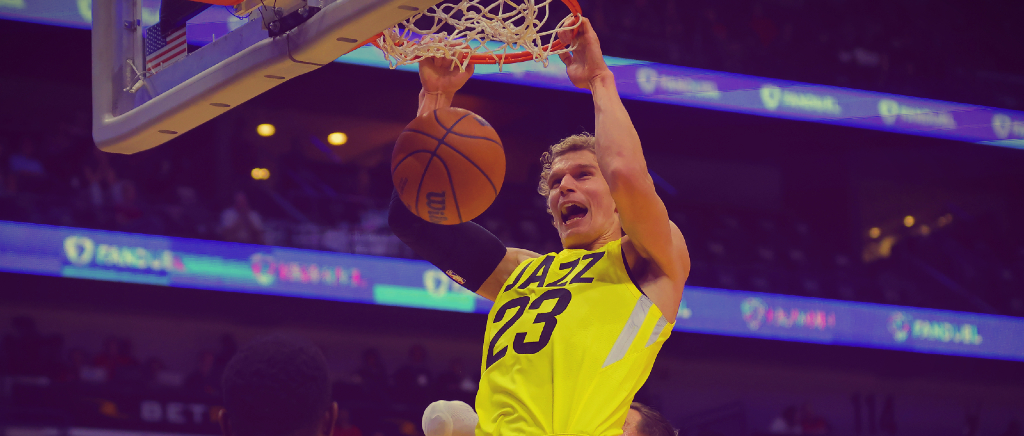
The Jazz weren’t expected to be as competitive as they were last season after trading away Rudy Gobert and Donovan Mitchell, but with an All-Star breakout from Lauri Markkanen, solid play from veterans like Jordan Clarkson that remained on the roster, and young players like Walker Kessler performing over expectations, they remained in the Play-In hunt until late in the season when they shut things down.
Utah traded a number of important veterans at the deadline last year and steadily slid out of the Play-In, and enter this season with fairly modest expectations. Still, for a team many thought would be starting over completely last year, they seem to be operating like a team that isn’t planning on a particularly long rebuild if they can avoid it. This summer saw them buy low on the trade market and continue adding through the Draft, as they hope to stay fairly competitive and, eventually, cash in on their immense amount of draft capital. Here we’ll grade out their offseason moves as they look to see if Markkanen and company can stay on a positive trend from last season.
Draft: B+
The Jazz took advantage of their significant draft capital to add three first round rookies to their roster. Taylor Hendricks, Keyontae George, and Brice Sensabaugh all join the Jazz roster this season, as they continue shifting their focus towards adding youth. Hendricks, the ninth overall pick out of UCF, is the headliner of the group, as he was a favorite of many draft evaluators including our Brad Rowland, who gave the Jazz an A- for their selection of the forward on Draft night.
Utah is in an interesting phase with a ton of picks, both this year and in the future, to complement a young roster that is still rebuilding. Scouts are split on Hendricks’ overall upside, but he brings definite intrigue as a defender and floor spacer with size. He projects as a potentially devastating role player that can fit just about anywhere.
While Hendricks figures to be part of the rotation early, George and Sensabaugh provide scoring upside off the bench with some development needed elsewhere. The Jazz got a B- and B for those picks respectively.
Utah has the freedom of three picks, and George is an intriguing player from an upside standpoint. He was a consensus top-10 guy coming out of high school and, while Baylor didn’t go perfectly, he can score and make shots off the bounce. He also has strong craft off the bounce, though George isn’t an elite athlete and could struggle on defense.
There are some injury and defensive concerns with Sensabaugh, but he is a bucket. He is a fantastic shooter that could average buckets of points in the right situation. He doesn’t offer much else right now, but this late in the draft, the value is strong.
Overall, this year’s Draft provided the Jazz with the kinds of young players with upside they’re seeking at this point of the build, and they earned pretty high marks for their efforts.
Free Agency/Contract Extensions: B-
With three first round picks joining the roster, the Jazz weren’t particularly active on the free agent market, but did ink Jordan Clarkson to a new three-year, $55 million extension after he picked up his player option. Clarkson has become a fan favorite in Utah and has steadily evolved into a reliable perimeter scorer (20.8 points per game last year) capable of creating for himself, while also becoming a better overall player in the process. For a team without a lot of veterans signed long-term, keeping Clarkson gives them a veteran presence who has ties to the playoff teams of the past and brings both on court production and off court guidance for their young squad.
Trades: A-
The Jazz made one of the best potential value adds in the NBA this summer, trading Rudy Gay and a second round pick to the Hawks for John Collins. Collins is coming off of a down year in Atlanta amid his third straight year of trade rumors, particularly struggling with his previously reliable jump shot while being asked to space the floor for the Hakws. Regaining his form there will be important to his long-term value, but Collins is an underrated defender and an excellent roll-man and the Jazz now have some very interesting big combinations they can roll with. How the starting lineup fares with an expected trio of Markkanen, Collins, and Kessler remains to be seen (and questions about their fit together is the only reason this is an A- rather than an A), but staggering that group by pairing Collins and Kelly Olynyk seems, on paper, like a terrific fit for maximizing Collins’ skillset.
Like many teams at their stage of a rebuild, the Jazz spent this summer being patient and staying the course. They’ll want to see another year with Markkanen as the star, how the rest of the young roster fills in the gaps around him, and how their very large frontcourt fares before making any further major moves. The veterans on the roster will be potential trade targets for playoff contenders at the deadline, as was the case last year. Long-term, the Jazz are in position to nab someone on the trade market to make a big upgrade, but will want to evaluate the roster as is for now before deciding where exactly that addition will be.
